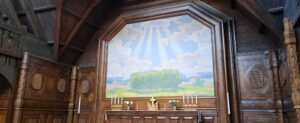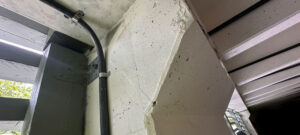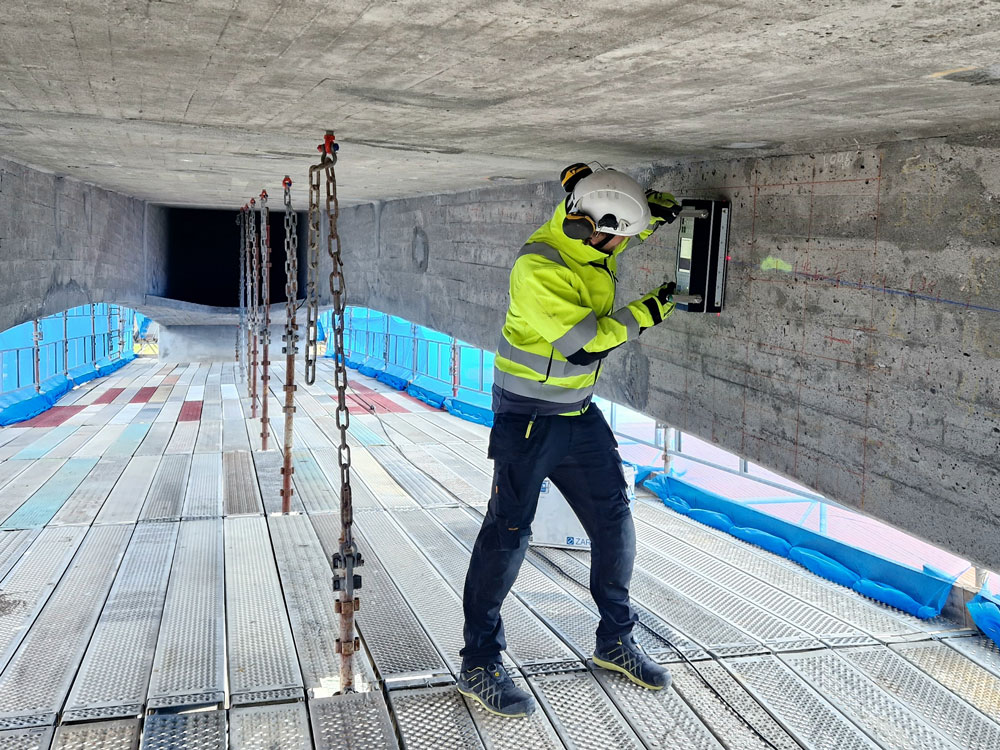Problem statement
Cracks in columns and joists and corrosion deposits. The cause of the problem was first identified by visual inspection and beam knocking, then sampling for carbonation and chlorides. The cover layers were examined and the extent of corrosion in the reinforcement was determined with EKP meters. In addition to sampling, control dimensioning of columns was also carried out.
Outcome
It was found that about 30 percent of the columns had severe corrosion and in some cases even corroded away reinforcement. Another 40 percent of the columns had corrosion damage and the rest had minor damage or none. The extent of the damage was about 300 mm below the asphalt and up to about 1.0 meter above the asphalt. The cause of the damage was chlorides in thawing salts that had accompanied the cars during the winter months. Damage to the floor joists (roof) was due to leaking joints/drains and inadequate waterproofing. Control calculations of columns showed that reinforcement was needed. The covering layers were sufficient in the vast majority of cases.
Solution
After carrying out the Level 1 and Level 2 investigation, we decided the following:
Pillar
- Pillars are stamped
- Substandard concrete is removed by mechanical bending, the reinforcement is exposed up to about 150 mm into non-corroded reinforcement. The reinforcement is exposed corresponding to about 1.5 reinforcement diameter.
- Reinforcement is sandblasted and anti-rust treated with the prescribed product.
- Pre-watering and concrete patching with relatively fast-setting concrete.
- Reinforcement with carbon fiber fabric.
- Free concrete surfaces were impregnated.
- Painting with carbon dioxide inhibiting paint.
Joists
- Grouting of cracks with epoxy.
- New wells.
- New waterproofing.
New future maintenance program for the parking garage.
Standard
EN1504-9 and SS-ISO 13822.
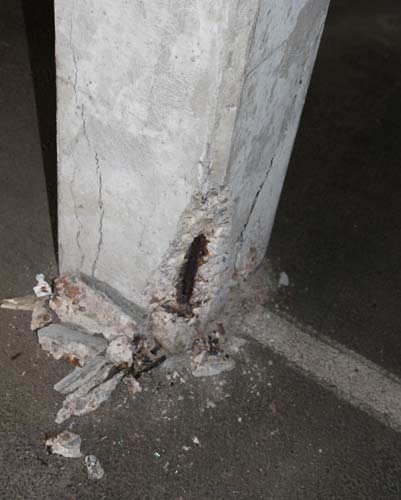
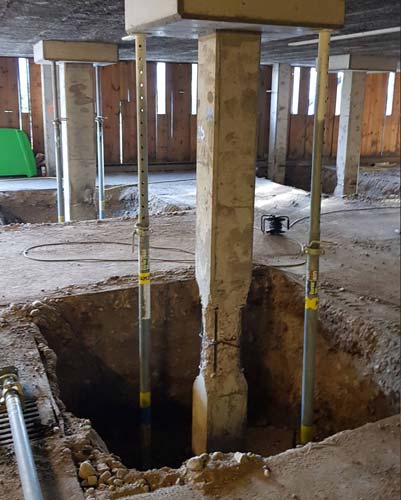
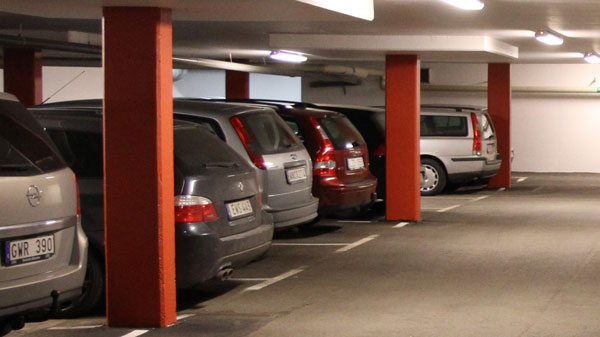
Commentary
The parking garage simply showed typical damage for a garage of 30-50 years of age with a lack of ongoing maintenance. Problems with corrosion of the steel reinforcement could have been minimized if the garage had been swept and hosed down after each winter season.
